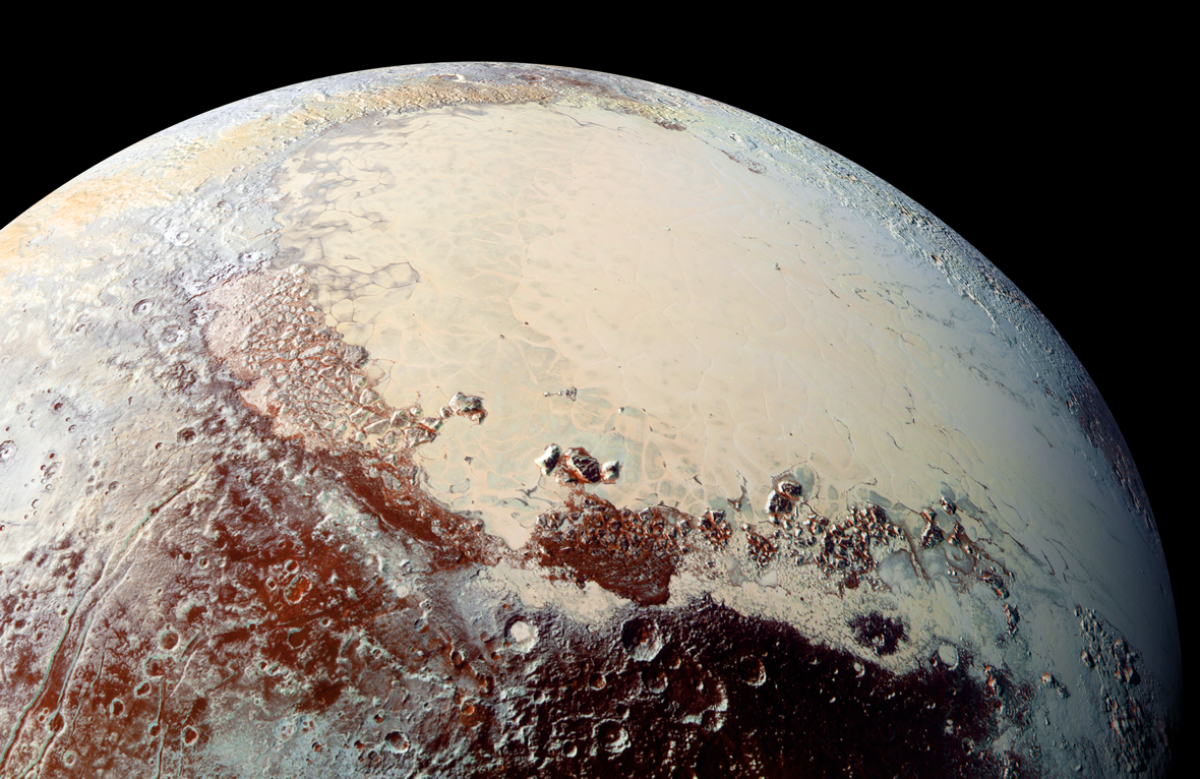First results from New Horizons flyby has scientists puzzled about Pluto

This high-resolution image of Pluto’s heart feature was captured by NASA’s New Horizons spacecraft. The region, informally called Sputnik Planum, has been found to be rich in nitrogen, carbon monoxide and methane ices.
- Share via
The first science paper to describe Pluto and its satellites after the New Horizons flyby has been released, just three months after the NASA spacecraft made its historic encounter with the dwarf-planet system.
The paper, published in Science, presents Pluto as a world of mystery and extremes, with high mountains, steep cliffs and glaciers of frozen nitrogen leaving paths across the planet’s surface.
Parts of Pluto are pockmarked with large craters, but there are also vast smooth plains that suggest the petite planet may still be geologically active -- something scientists did not anticipate and cannot yet explain.
“We searched for craters [on the plains], and there are none,” said Alan Stern of the Southwest Research Institute in Boulder, Colo., who is the principal investigator for the New Horizons mission. “That means that it was created yesterday on geological time scales.”
For most icy satellites in our solar system, the resurfacing that would erase evidence of old impact craters is associated with heat generated by the gravitational push and pull of their host planets. But the researchers say that explanation does not work for Pluto.
“It is really puzzling that it is still active,” said Stern, who is also the first author on the paper. “We don’t know how to make that happen.”
The scientists also note that Pluto has the widest range of bright and dark surface features of any body in the solar system except for Iapetus, the third largest satellite of Saturn. There are areas on Pluto that are black as coal, and others that are white as freshly fallen snow, as well as everything in between, Stern said.
The report, which is available free online, also includes some basic information like the dwarf planet’s diameter (1,474 miles) and that of its largest moon, Charon (1,212 miles). There is also some information about two smaller moons, Nix and Hydra, which were both significantly brighter than scientists expected--another Plutonian puzzle.
From shadow measurements, the authors conclude that there are mountains on Pluto more than a mile high. This implies that there are other materials on the planet besides the nitrogen, carbon monoxide and methane ices that were seen in Earth-based observations.
Mountains of that height cannot be made of nitrogen or the other known ices, because they would collapse. However, they could be made of water ice, which would be solid as rock so far from the sun.
Only 15% of the information New Horizons has collected has been beamed back to Earth, so these findings are just the beginning.
Still, Stern said this preliminary report suggests Pluto is much more complex and puzzling than anyone expected.
“We get an A for exploration, but an F for properly predicting what we’d see,” he said.
Science rules! Follow me @DeborahNetburn and “like” Los Angeles Times Science & Health on Facebook.




